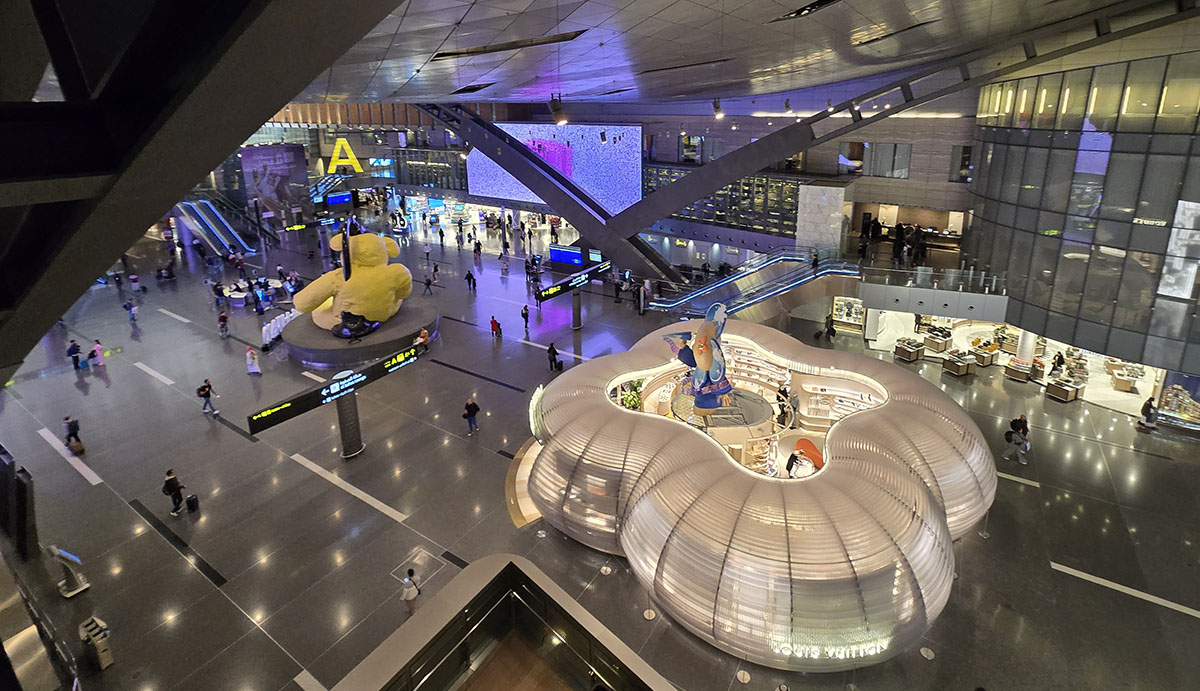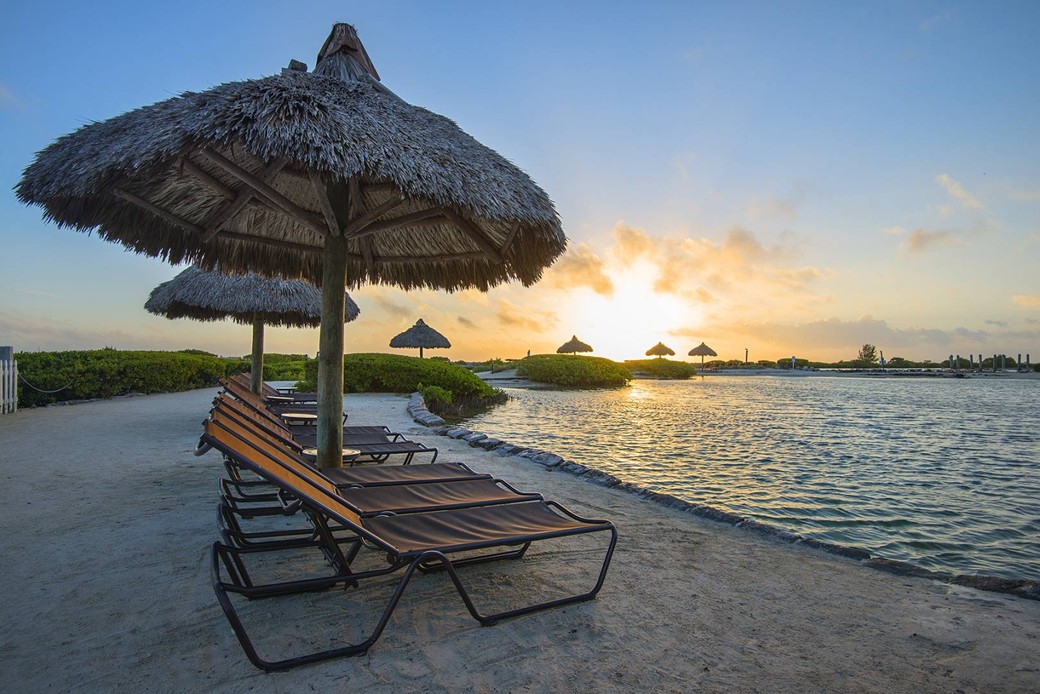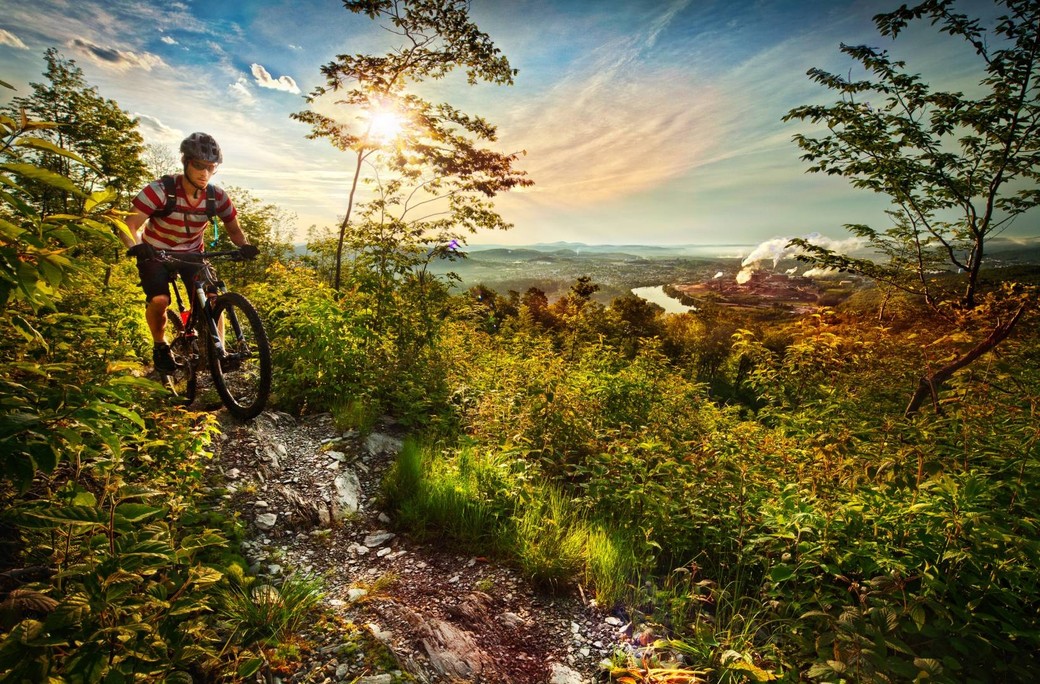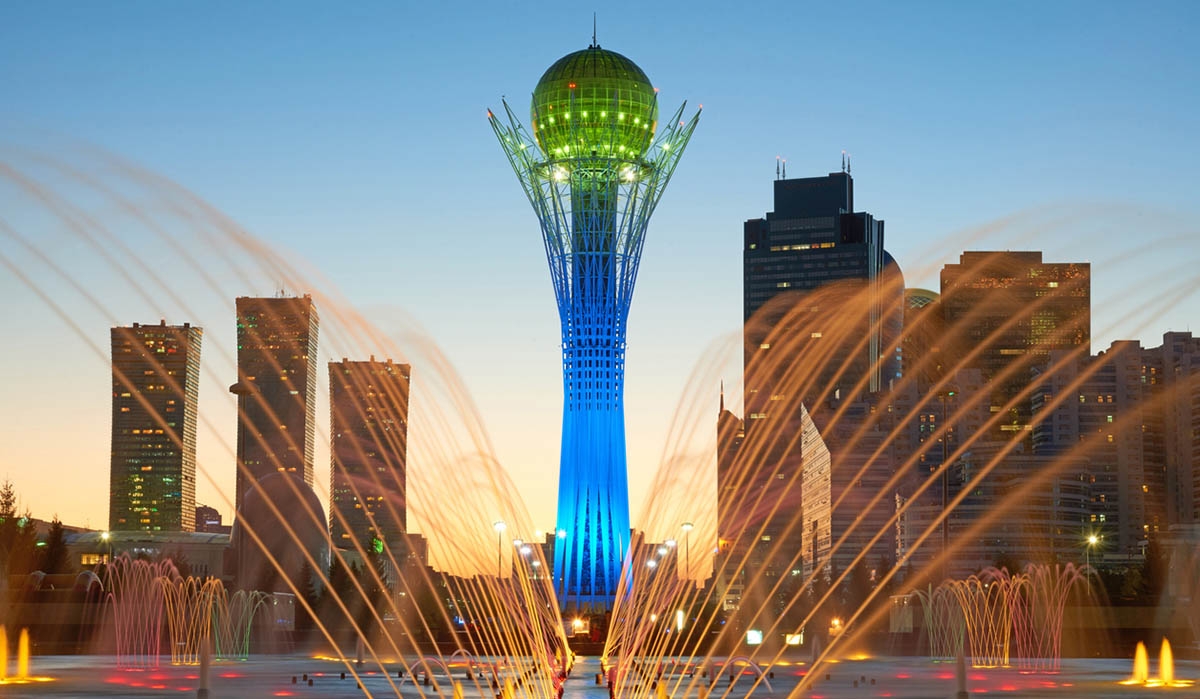
Kazakhstan’s Nur-Sultan: where East and West meet on the steppe
ABOVE: The capital city of Nur-Sultan, Kazakhstan with landmark Baiterek tower. (PHOTO: iStock)
The Republic of Kazakhstan is the ninth largest country in the world by land area and is the world's largest landlocked country, covering a vast territory of 2,727,300 square kilometres. It is larger than Western Europe. Kazakhstan shares the distinction of being the only landlocked country in the world stradling on two continents.
Kazakhstan’s geography is as diverse as its people and includes flatlands, steppes, taigas, rock-canyons, hills, deltas, snow-capped mountains, and deserts. With almost 19 million people, Kazakhstan has the 62nd largest population in the world. However, its population density is less than 6 people per square kilometre.
The modern Kazakhstan republic became independent in 1991 but the history of the Kazakh nation goes back to the founding of the Kazakh Khanate in the mid-1450s, after the collapse of the Golden Horde that had taken the Mongols rule as far west as continental European Russia.
This Khanate of the Turkic-dialect-speaking Islamic tribe was massive and ruled from present-day Astrakhan, in Russia, to the eastern regions of Persia. The Khanate would last until 1822 when the eastward expanding Russian empire set its territorial ambitions upon the area.
Although the Khanate became part of the Russian Empire, the Kazakh people never lost their sense of identity, even after struggling through forced collectivisation of their nomadic culture and the famines of the Stalinist era, which Harvard historian Anne Applebaum claims resulted in the deaths of 1.5 million people or a staggering one-third of the total population.
In 1991, the Soviet Union collapsed and as a result, the Kazakh Soviet Socialist Republic became the independent nation of Kazakhstan. For the first time in nearly 150 years, (minus a brief period between 1917 and 1920 during the Russian Civil War) the Kazakh people had their full sovereignty restored.
With centuries of Russian migration to the area and the deportations by Stalin, combined with the emigration of various other ethnic groups, the modern-day Kazakh state is not homogenously Kazakh. Ethnic Russians make up nearly 20 per cent of the population alone. Religiously the country is quite diverse: 23 per cent of the country is Christian, 5 per cent Buddhist, and 72 per cent Islamic.
Against this diverse backdrop, the first President of the Republic, Nursultan Nazarbayev, had to create a stable society in which 130 different nationalities called home and in a region that was in ethno-religious turmoil. The nearby former Soviet states of Tajikistan, Azerbaijan, Armenia, and Georgia were struggling to find their feet in a post-Soviet world.
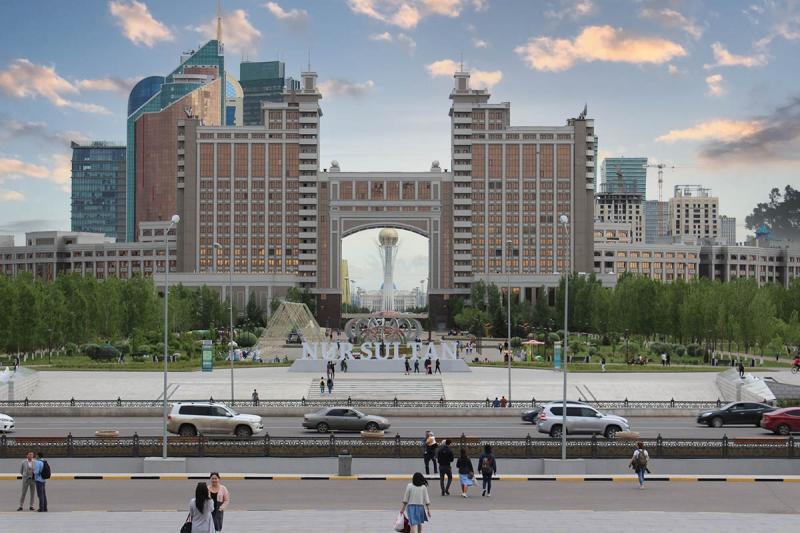
Nazarbayev kept the peace by ensuring the country remained secular and non-racial, a place where religion and politics remained separate. He encouraged a revival of the Kazakh language while ensuring that Russian remained an official language, due to its widespread usage during the Soviet era. Nazarbayev created a new capital city for the country, Astana. The city is a futuristic and powerful symbol of the new Kazakh republics’ stability and success in the post-Soviet era.
During Nazarbayev’s time in power, Kazakhstan climbed to “very high” on the UN Human Development Index, with a standard of living higher than any other post-Soviet republic, including Russia. The Kazakh state became prosperous and open to the rest of the world, a feat nobody could have predicted.
In 2019, President Nazarbayev resigned from power after 28 years as president of the republic and, Astana was unanimously renamed Nur-Sultan by the Kazakh senate. Against this backdrop of continuous growth and change at an advanced speed, I landed in Kazakhstan, in June of 2019, to cover the first post-Nursultan Nazarbayev presidential election.
The country is truly remarkable to any visitor. Arriving from North America or Western Europe you would think that you were landing in Asia, yet somewhere distinct with one foot in Asia, one in Europe, and with one or two toes in Turkey. As you drive into the city from the Nur-Sultan airport, the vast Kazakh steppes can be seen in the distance. It is on this steppe where some of the greatest civilizations in human history, including the Mongols, lived and traveled. Looking out on the steppe stirs up images of mounted archers on horses, and tradesmen traversing from Europe to China and vice versa, as they did for centuries.
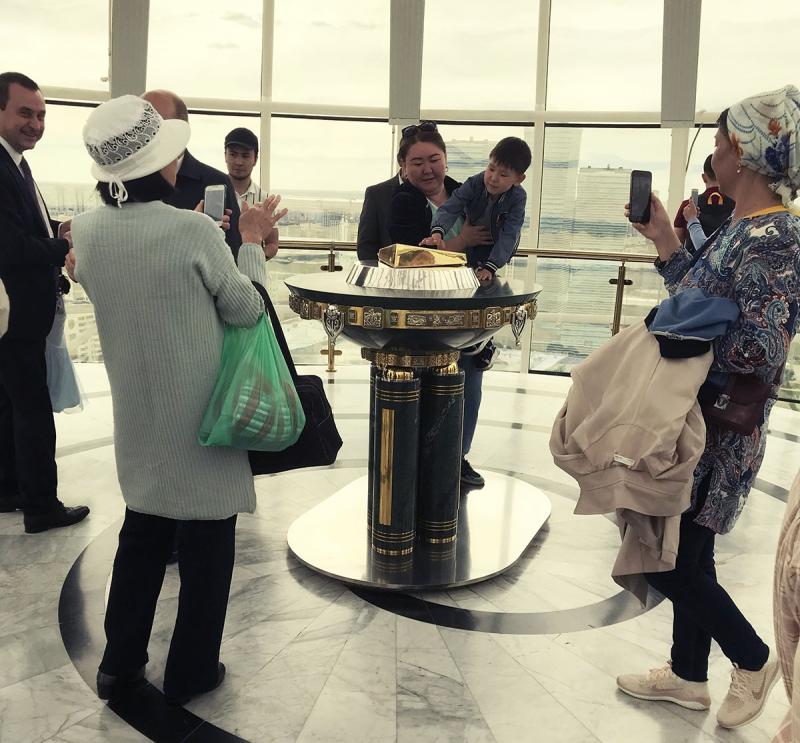
ABOVE: At the top of the Baitererk Tower, the handprint of President Nazarbayev is said to bring good luck. (Photo: Mckenzie Donovan)
Entering Nur-Sultan, the architecture is modern and futuristic to the point of looking like a city from Star Wars. The Khan Shatyr Entertainment Center is a large tent that covers nearly 10 football fields in the area. It stands proudly looking both modern and contemporary, while also paying homage to the nomadic past of the country. Across the street, the main walking path of the city, Nurhzhol Boulevard, hosts beautiful gardens leading up to the Baiterek Tower, a symbol of the Independent Kazakh republic. Inside the tower at the top is a handprint of President Nazarbayev where children and adults alike line up, believing that placing their hand in it brings good luck.
Outside one cannot help but notice that the mosques stand side by side, in harmony with Orthodox churches. This harmony exists between the people too as Caucasian ethnic Russians mingle with their fellow ethnic Kazakh citizens. An old ethnic Kazakh woman sat singing the Soviet-era patriotic song, Katusha, as people walked by. In the distance stands the Palace of Peace and Reconciliation, a multi-faith centre used for worship and as a national culture museum. It is a giant glass pyramid and looks almost as ambitious as the message it promotes: that all religions and cultures can live in peace together. It is a powerful message coming from one of the worlds most storied places.
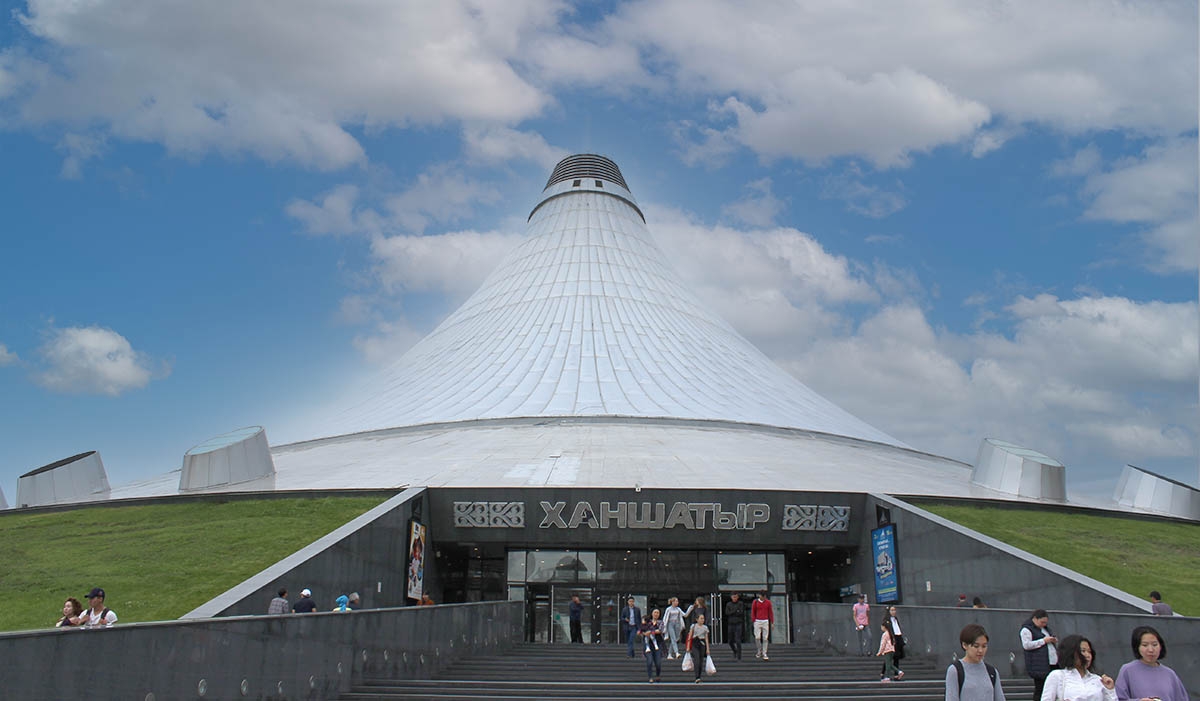
ABOVE: The Khan Shatyr Entertainment Center is a 300-foot-high, translucent tent-like structure that harkens back to the traditional nomadic culture of the Kazakh people. (Photo: Mckenzie Donovan)
The vibrant architecture of Nur-Sultan, along with the museums and cultural sites of the city, is world-class. The Museum of the First President of the Republic of Kazakhstan is in the residence of former President Nazarbayev. Guided tours are available in English and tell the story of President Nazarbayev's humble roots, his accomplishments and those of the Kazakh state since independence. Admission is free and it is well worth a visit to get a sense of the country.
The National Military-Patriotic Centre of the Armed Forces of Kazakhstan is the nations war museum. With its grand collection and focus on Kazakhstan military history from the time of the first Kazakh Khanate until today, it puts many western countries’ military history museums to shame. Special emphasis is put on the Great Patriotic War (WW2) where 300,00 Kazakh soldiers and 350,00 civilians from a population of around 6 million who died fighting the Nazis. The museums’ vehicle gallery is spectacular and filled with unique memorabilia that one would never see in North America.
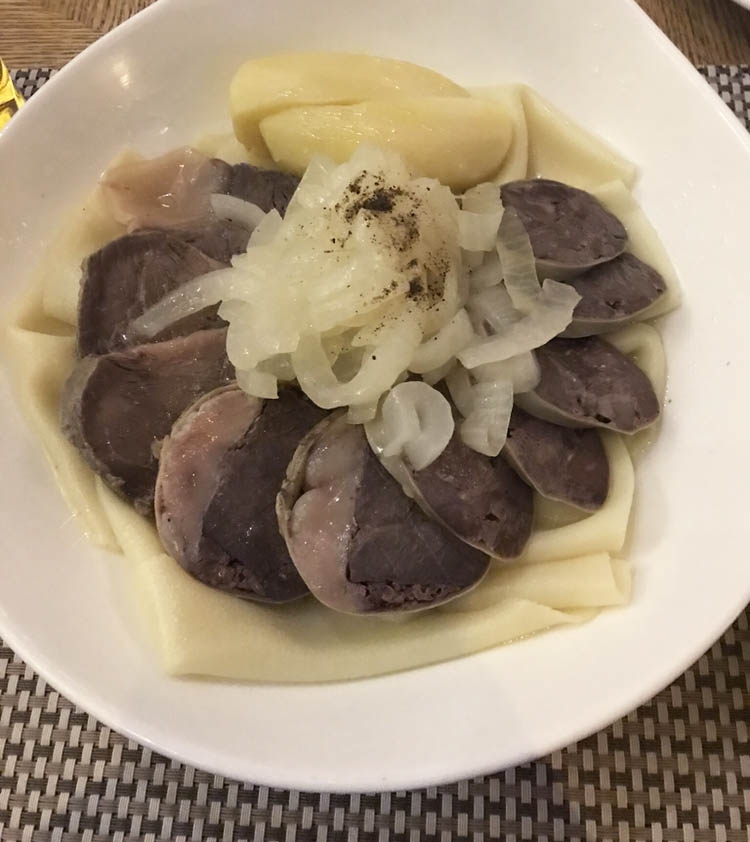
ABOVE: Beshbarmak is a delicious local dish made from horse meat and mutton. (Photo: Mckenzie Donovan)
Kazakh cuisine is hearty and full of meat and carbohydrates that is reflective of both its Asian and European heritage. Every tourist should start by trying shubat or chal, a fermented camel milk. It has the taste of a yoghurt drink and is surprisingly delicious, however, be warned that it is not to be consumed in large volumes as my feeble Canadian stomach discovered. Kazakhs enjoy eating horse meat which is as common to them as pork or beef is in Canada. Kazy is a horse sausage a delicacy that is so tender. It melts in your mouth and tastes like a combination of beef and venison.
A must-try is Beshbarmak, a dish made by simmering horse and mutton for hours. It is served with extra-wide flat noodles submerged in a broth and topped with onions. It is utterly delicious and very satisfying. Laghman can be described as a Kazakh version of ramen with pulled noodles, meat and vegetables served in a tasty soup. It’s another thoroughly enjoyable dish.
Because of their shared heritage and close relationship, Russian food is also widespread in Kazakhstan. Expect to find Borscht and Pelmeni (Russian perogies) on offer or manti dumplings, the Kazakh equivalent that has its origins in Turkic rather than Slavic roots. For those without the appetite to eat local, Nur-Sultan offers plenty of international options: Chinese, Thai, and Italian restaurants, almost every international fast-food chain you can name are around the city.
The day after the election was a day of relaxation before the inevitable return to Canada after several days of high-intensity work. My search for some souvenirs for friends—in particular, a collection of military patches—led me on a journey that ended at a shopping centre on the outskirts of the city, nearly 8 kilometres from the hotel. I entered a large mall with individual bazaars and food market stands selling everything from fish, horse meat, watermelons to vegetables.
I must have appeared lost because a friendly Kazakh man approached me. Due to the language barrier, we couldn't communicate but after showing him a photo of the store, he ushered me up five flights of stairs to the shop. It would have been impossible to find without his kindness.
Walking the back streets through local neighbourhoods in Nur-Sultan is among the most memorable of all my travels. The small kebab and bakery stands and the cyclists going by in the vibrant streets struck a contrast to the eastern European-style row buildings, covered in colourful signs. On multiple occasions people approached me, presumably speaking Russian, asking if I needed assistance. My marker was looking at the skyline and a large national flag above the buildings that I could also seen from my hotel. It gave a bearing like the North Star, and I was back at the hotel in no time.
What is most surprising about Kazakhstan is that even though it is halfway around the world, it is very much like Canada: A peaceful country that is modern yet in touch with its past, with a multi-ethnic population, two official languages, and where people are friendly and helpful.
Canada has been shaped by British, French, American and Indigenous culture. Kazakhstan has been shaped by the cultures of Russia, Turkey, the Mongols, and the dozens of different nationalities that now call it home. Regardless of their race or ethnicity, every citizen of Kazakhstan is distinctly Kazakhstani even though the country is not homogenously ethnically Kazakh.
Like Canadians, it is not skin colour, religion nor creed that defines a Kazakh person but a deep pride in their country. They are a very tolerant and kind people who go out of their way to help strangers, such as myself. If you have the chance to visit the country, you should, you won't regret it.

